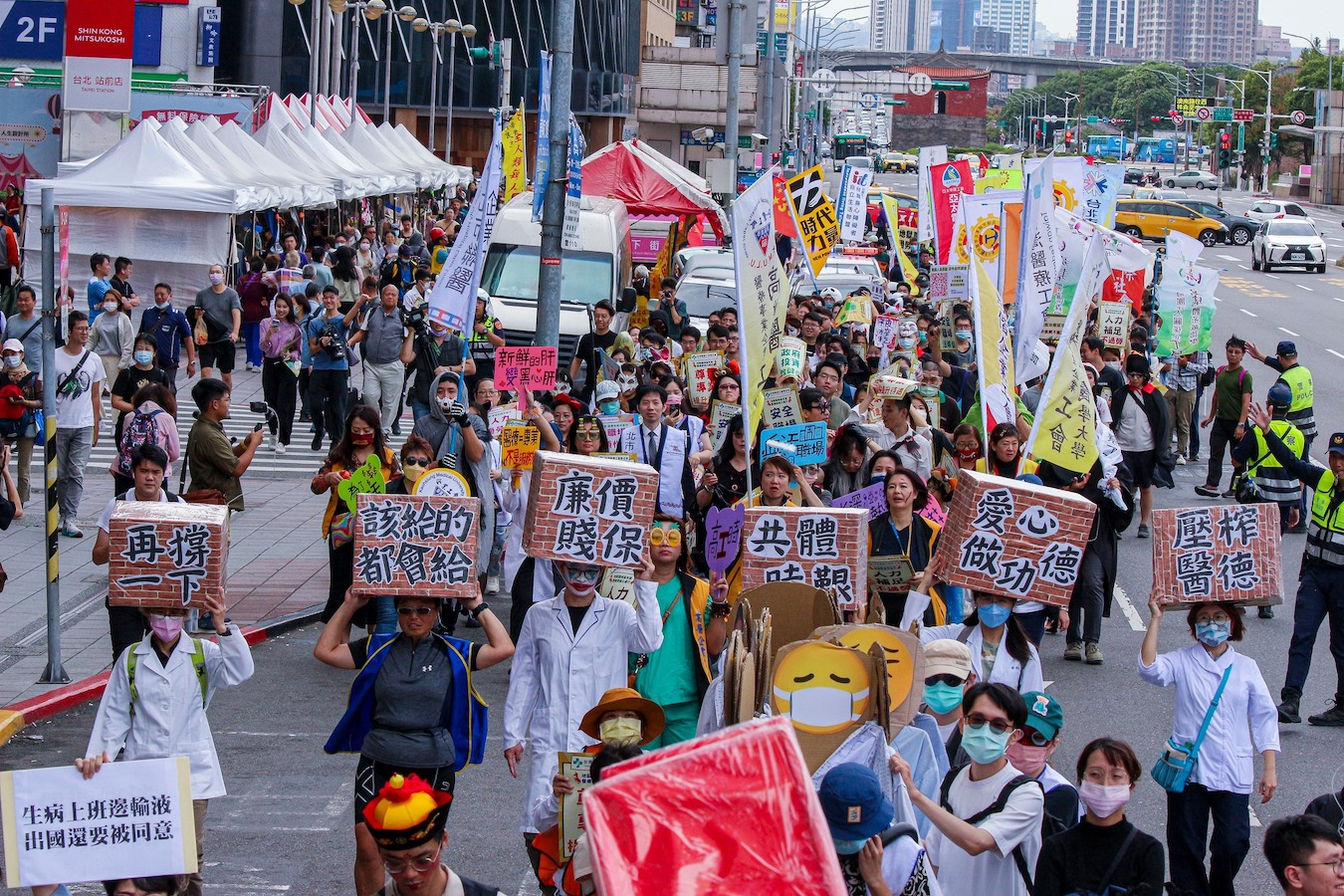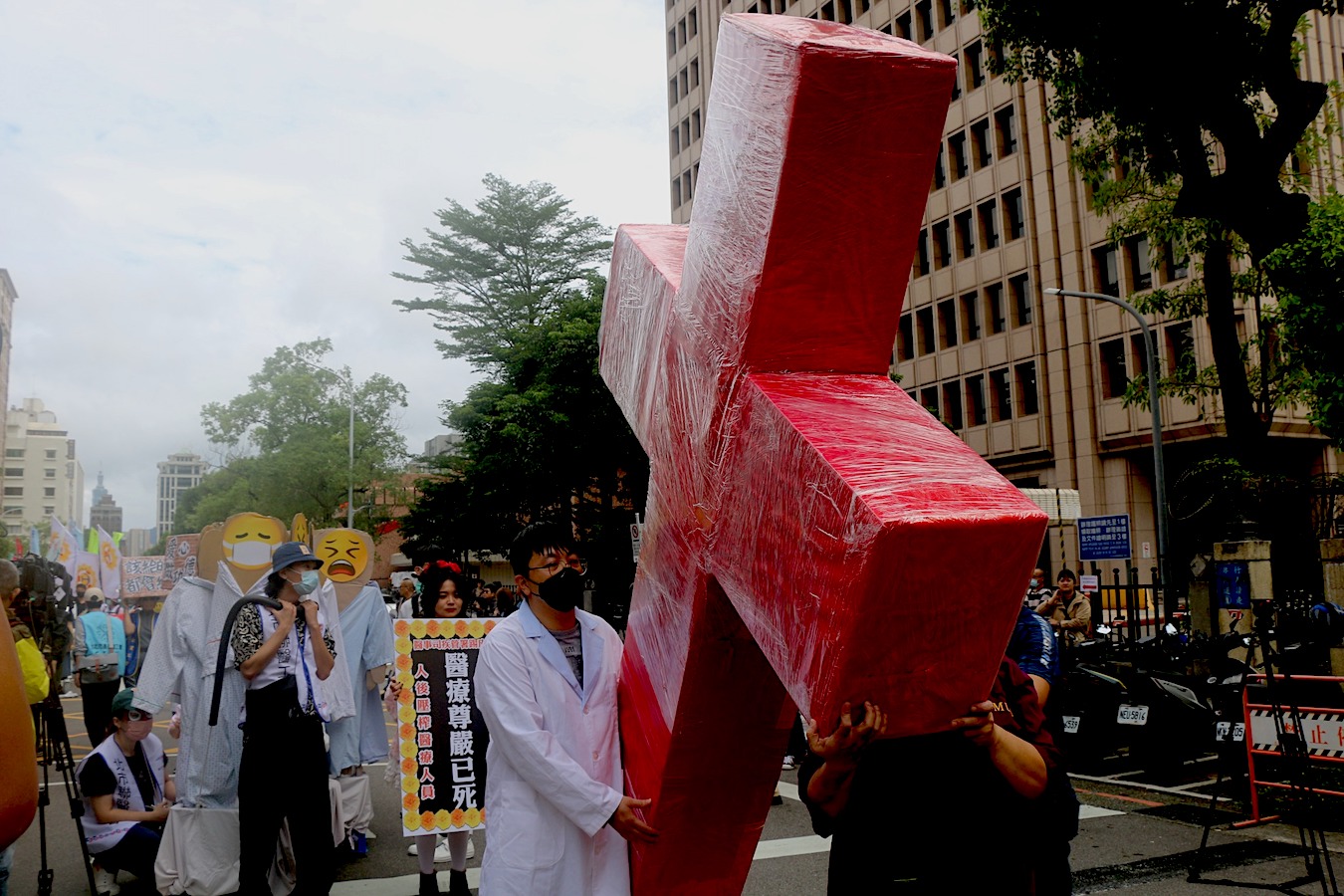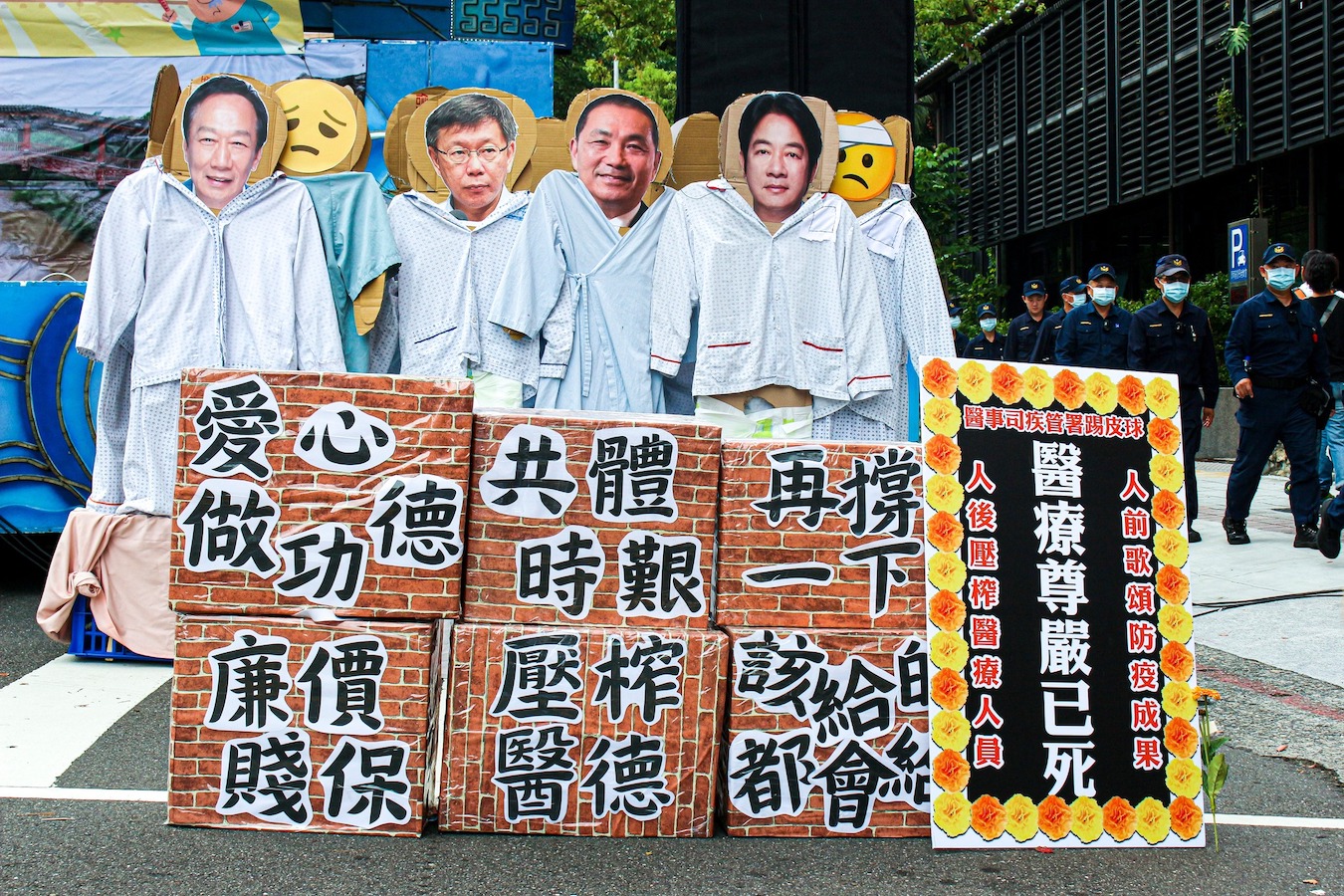by Brian Hioe
語言:
English
Photo Credit: 台灣醫療工會聯合會/Facebook
MEDICAL WORKERS demonstrated on Sunday to call for improvements in their labor conditions. The demonstrations, which took place in front of the Legislative Yuan, drew several hundred. Some reports suggest that 500 or more attended.
21 medical unions participated in the protest, under the umbrella of the Taiwan Federation of Medical Unions. In particular, seeing as it is a week before Halloween, a number of medical workers who participated did so in Halloween costumes. This added a degree of theatricality to the protest, as sometimes occurs with demonstrations that take place shortly before Halloween.
To this end, the demonstration was termed a “Workers’ Rights Ghost Parade”, with medical workers criticizing how they had “no tomorrow” under the current system. Participants ranged from a number of professions, including doctors and nurses, therapists, radiologists, and others. Likewise, participants dressed as zombies, vampires, nuns, and other costumes, including Japanese anime-inspired costumes such as Detective Conan cosplay.
 Photo credit: 台灣醫療工會聯合會/Facebook
Photo credit: 台灣醫療工會聯合會/Facebook
Medical workers were seeking to call attention to how they are systematically overworked in Taiwan. Indeed, in past months, medical workers have demonstrated multiple times to call for improvements in working conditions. And while, ahead of the elections in January, measures have been rolled out for medical workers, this does not fix the systematic nature of the issues that plague medical workers.
In particular, medical workers have been departing the profession in droves since the start of the COVID-19 pandemic. For example, in the first six months of this year, 1,700 nurses have quit their jobs. This is the largest departure of nurses in thirty years. Although the government announced that it will provide subsidies to medical workers during the pandemic, medical workers have often complained of failing to receive these subsidies.
Society has become increasingly aware of the dire conditions facing medical workers since the pandemic as well. As such, there are increasingly few people entering the workforce to become nurses. This will prove to be a severe issue at a time of declining birthrates and an increasingly elderly population, with Taiwan on track to become a “super-aged” society in the coming years. Taiwan has 318,254 licensed nurses, though only 185,900 are practicing nurses. According to the Ministry of Health and Welfare, as a result of which it is thought that this may lead to shortages of 24,000 nurses by 2024.
 Photo credit: 台灣醫療工會聯合會/Facebook
Photo credit: 台灣醫療工會聯合會/Facebook
Nurses originally called for the implementation of a three-shift work schedule. Nevertheless, the Tsai administration eventually responded by announcing subsidies for the three-shift system in a manner that provoked outrage, seeing as it was seen as failing to address the fundamental issues at stake. The new measures will increase the subsidies for night shifts for nurses from 400 NT to 600 NT, which will increase from 600 NT to 1,000 NT for late night shifts. 2.5 billion NT would be allocated to pay for night shift subsidies for nurses, while 3.5 billion NT would be allocated to pay for subsidies for late night shifts.
The new subsidy system also was criticized as failing to account for the fact that the workload is sometimes heavier in the morning and nurses who work night shifts are usually younger. As such, this new system may increase tensions between older and younger workers. Medical workers have also called for trying to reduce the pay gap between medical institutions in northern and southern Taiwan, in line with the economic disparity between the north and south.
Medical workers have also been critical of the devaluing of hospitals and the medical insurance system, with a deficit of 10 million to 70 million NT per year from 2008 to 2020. Consequently, medical workers have called for a greater share of the GDP to be committed to medical care, as some of the presidential candidates in the 2024 elections have called for. To this extent, unions have criticized the lack of union representation in making decisions about the overall medical system, with regard to insurance, hospitals, and other matters, resulting in decisions made without consulting frontline medical workers. This occurs even as Taiwan has won accolades internationally for its universal healthcare system.
 Photo credit: 台灣醫療工會聯合會/Facebook
Photo credit: 台灣醫療工會聯合會/Facebook
Such issues are seen as contributing to a high ratio of nurses to patients. This is between 1:13 and 1:15. According to surveys, nurses take care of 11.55 people during day shifts, 15.55 people during shorter night shifts, and 17.88 people during longer night shifts. Some nurses at regional hospitals have reported taking care of as many as 26 patients during night shifts.
Nurse union representatives have cited that Taiwan has among the highest nurse-to-patient ratios in the world, higher than the US, Australia, UK, and Japan. A high nurse-to-patient ratio increases the odds of mortality for patients. According to research, if the number of patients being cared for increases from 4 to 5, this increases the mortality rate in 30 days by 7%. If the number of patients being cared for increases to 8, this increases the mortality rate by 31%.
It is to be seen, then, whether medical workers will succeed in making their demands heard by politicians. Certainly, the upcoming election may represent a point of leverage.

